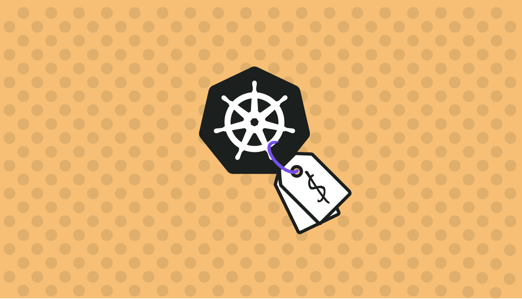
When managing costs in Kubernetes (K8s) deployments, choosing the right pricing model is crucial. This blog explores why fixed pricing may be a better choice than the common practice of charging per K8s pod, explaining how it can ease budgeting, simplify billing, and save money for companies using cloud services.
Challenges of Charging Per K8s Pods
Charging per K8s pod can complicate Kubernetes cost management, introducing variability as pod numbers fluctuate with application demands. This variability makes it challenging to predict and budget costs accurately.
Moreover, charging per pod may not reflect the actual value derived from your Kubernetes solution, as pods vary in resource requirements and functionality. This can lead to inefficient resource allocation and cost distribution. Additionally, as your Kubernetes environment grows, the cost can escalate significantly if charged on a per-pod basis.
Understanding Fixed Pricing Models
Fixed pricing models refer to pricing structures where a set cost is determined for a particular product or service, regardless of the number of K8s pods used. This means that regardless of the scale or size of your Kubernetes environment, you will pay a consistent and predictable price.
With fixed pricing, you don't have to worry about the number of pods you are using and the associated costs. This can simplify the billing process and make it easier to budget for your Kubernetes expenses.
Additionally, fixed pricing models often come with additional benefits and features that can enhance the value you receive from your Kubernetes solution.
Advantages of Fixed Pricing
Opting for fixed pricing over charging per K8s pod offers several advantages:
- Scalability and cost predictability: With fixed pricing, you can easily scale your Kubernetes environment without worrying about increasing costs. This allows for better cost predictability and budgeting.
- Simplified budgeting and planning: Fixed pricing models simplify the budgeting and planning process by providing a consistent cost structure. This makes it easier to allocate resources and plan for future Kubernetes expenses.
- Enhanced value: Fixed pricing models often come with additional features and benefits that can enhance the value you receive from your Kubernetes solution. These may include advanced monitoring tools, technical support, and access to premium features.
Overall, fixed pricing provides a more transparent and predictable cost structure for your Kubernetes environment, allowing you to focus on optimizing your applications and infrastructure.
Scalability and Cost Predictability
One of the key advantages of fixed pricing is scalability and cost predictability. With fixed pricing, you can easily scale your Kubernetes environment without worrying about increasing costs. This is particularly beneficial for businesses with fluctuating workloads or dynamic application requirements.
By knowing the fixed cost associated with your Kubernetes solution, you can accurately predict and budget for your expenses. This allows for better financial planning and resource allocation, ensuring that you have the necessary resources to support your applications without overspending.
Additionally, fixed pricing enables you to scale your Kubernetes environment without incurring additional per pod charges. This flexibility allows you to adapt to changing business needs and efficiently utilize your resources.
Overall, the scalability and cost predictability offered by fixed pricing models make them a more reliable and cost-effective option for businesses using Kubernetes.
Simplified Budgeting and Planning
Fixed pricing models simplify the budgeting and planning process for your Kubernetes environment. With a fixed cost structure, you can easily allocate resources and plan for future expenses.
By knowing the exact cost of your Kubernetes solution, you can accurately estimate your monthly or yearly expenses. This enables you to set a budget and allocate funds accordingly.
Moreover, fixed pricing eliminates the need to constantly monitor and track the number of pods used in your environment. You don't have to worry about unexpected spikes in costs due to increased pod usage, making budgeting more straightforward.
Simplified budgeting and planning allow you to focus on optimizing your applications and infrastructure, rather than spending time and resources on managing cost fluctuations.
Finout's FinOps Platform
Finout's FinOps platform is an example of a fixed pricing solution for Kubernetes environments. With Finout, you can benefit from a consistent and transparent pricing model that doesn't charge per K8s pod.
Finout K8s solution, offers scalability and cost predictability, allowing you to easily scale your Kubernetes environment without incurring additional charges. It also simplifies budgeting and planning by providing a fixed cost structure, making it easier to allocate resources and plan for future expenses.
Additionally, Finout includes advanced monitoring tools, technical support, and access to premium features, enhancing the value you receive from your Kubernetes solution.
Conclusion
The choice between fixed pricing and charging per K8s pod is crucial for efficient cost management in Kubernetes deployments. While per-pod charging introduces complexity and unpredictability, fixed pricing offers a more straightforward and reliable approach. By opting for fixed pricing, businesses can enjoy scalability, cost predictability, simplified budgeting, and enhanced value, ultimately leading to more effective financial planning and resource allocation.
Finout's FinOps platform demonstrates the advantages of fixed pricing, providing a comprehensive solution that aligns with the needs of modern Kubernetes environments.
By embracing fixed pricing, organizations can better navigate the challenges of cloud cost management and optimize their Kubernetes deployments for long-term success.







